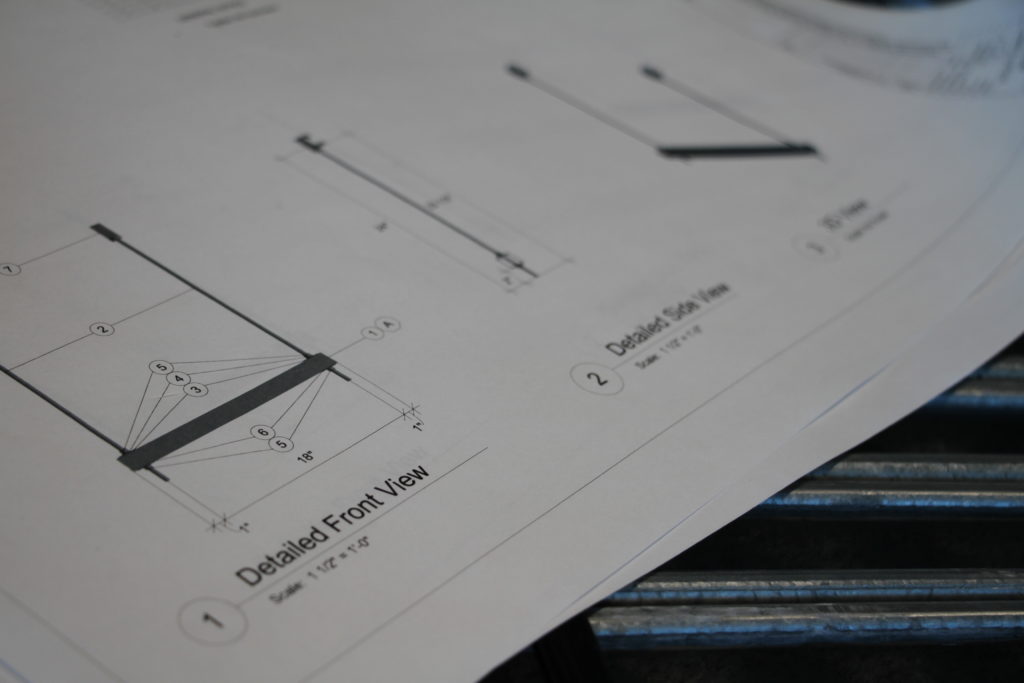July 22, 2020 Brandon Teachman
4 Keys to Customer-Centered Product Design
The construction industry is seeing a growing shortage of workers, with a reported 247,000 job openings as of earlier this year. This labor shortage will continue to escalate as the workforce ages and baby boomers reach retirement age. These shortages are not unique to construction; you can find similar issues in healthcare and manufacturing. Products that reduce hours and increase safety become even more critical to a business, because employee availability is vital.
At Excellerate, the work we do makes our customer’s employees more efficient and safer. Applying a customer-centered approach to our design process enables us to create products that resonate with our customers. Our customer-centered design process is broken into four steps.
1) Identify Key Product Information
Customer research is a valuable aspect of product design, no matter where you are in a product’s life cycle. The goal of customer research is to discover and document information about the product’s users, providing data to lead the product design process. There are many user research methods, but the most frequent are user interviews, with question/answer sessions to gain insight into their experiences, problems and expectations of the product, and field studies, observing users in the environment in which the product is intended to be used. This research can guide future work and help validate product development decisions.
2) Convert Insights Into Design
After developing a good understanding of the user, a detailed set of customer and functional requirements are created. Examples include:
- Customer requirements for product to be highly visible in low light. The functional requirement to meet this could be specifying high-visibility paint on the unit.
- Customer requirements for product to be used both indoors and outdoors. The functional requirement would be specifying the level of protection from the elements.
The product design team uses the information to guide the design, ensuring that the product meets all requirements. Without such insights into the design process, the outcome could be lost revenue due to the customer not buying because the product does not meet their needs.
3) Evaluate Design Concepts
Once you have an initial design concept, it is time to evaluate that concept with end-users. This evaluation allows the product team to identify the best solutions and enable further refinement of the design. Design feedback may be based on sketches, physical prototypes or functional prototypes provided to users who provided input and their interaction with the concept. The results are used to inform design decisions and ensure the end product will enable users to meet their goals.
4) Repeat for Insight
While a single round of end-user research provides valuable information for the product design team, product development is a continual process. With new insights from end-user evaluations, the design team can refine the design, iterating through product versions and end-user research as needed until reaching a final product. End-user research may also be conducted on released products to validate marketing claims and identify new user requirements to be incorporated into a future product.
Customer-centered design is a great process for design, providing confidence that your product will help its users accomplish their goals, leading to increased sales and lower customer service costs. Tailoring products for people in specific contexts and with specific tasks also leads to safer products. The process can be incorporated into agile, waterfall and other project management methodologies.
Putting the product design team in close contact with users very often leads to a more profound sense of empathy with the customer. This is essential in creating effective and efficient designs.
Interested in learning more? Check out our other articles and subscribe to be the first to know about future Excellerate blog articles.

 4 Keys to Customer-Centered Product Design
4 Keys to Customer-Centered Product Design

